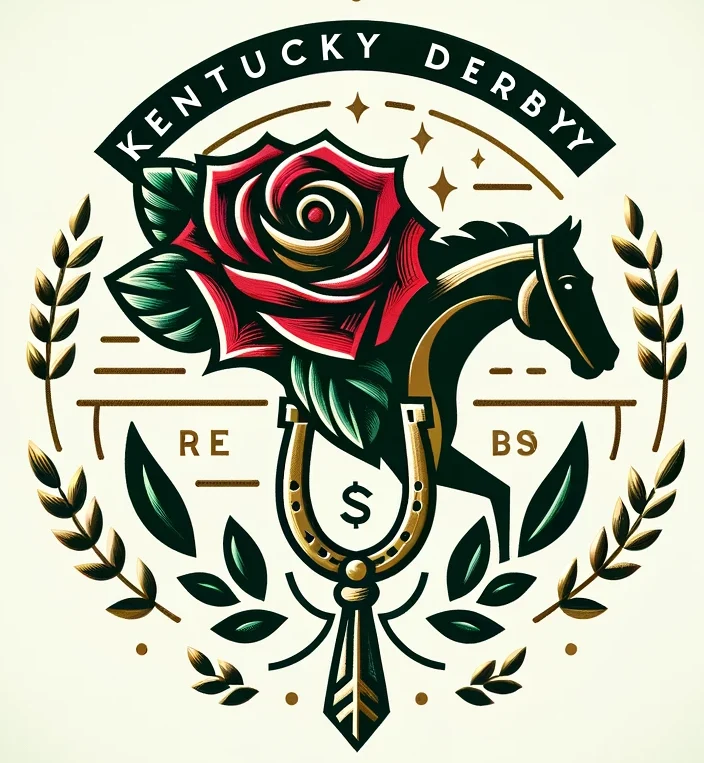How to Bet on the Kentucky Derby
Key Takeaways
- Understanding the various types of bets available for the Kentucky Derby, from simple win/place/show bets to more complex exotic wagers like exactas and trifectas.
- Step-by-step guidance on how to place a bet on the Kentucky Derby, whether you’re at the track, using an online sportsbook, or utilizing a betting kiosk.
- Insightful betting strategies tailored specifically for the Kentucky Derby, including tips on handicapping horses, managing your bankroll effectively, and maximizing your chances of winning big.
Introduction to Betting on the Kentucky Derby
The Kentucky Derby is one of the most prestigious horse races globally, offering a thrilling experience for both racing enthusiasts and bettors alike. Betting on the Kentucky Derby adds an extra layer of excitement to an already exhilarating event. Whether you are new to horse race betting or a seasoned punter, understanding the various bet types and strategies specific to this iconic race is crucial for making informed wagers.
When it comes to betting on the Kentucky Derby, there are several key bet types to consider. The most common bets include Win (picking the horse that will finish first), Place (selecting a horse that finishes first or second), Show (betting on a horse finishing in one of the top three positions), Exacta (predicting the top two horses in exact order), Trifecta (choosing the top three horses in precise order), and Superfecta (selecting the first four horses in exact order). Each bet type offers different odds and potential payouts based on their level of difficulty.
To increase your chances of success when betting on the Kentucky Derby, it’s essential to conduct thorough research before placing your wagers. Factors such as each horse’s past performance, jockey skills, trainer history, track conditions, post position draw, and overall form should all be taken into account when making your selections. Additionally, keeping an eye out for expert predictions and insights from reputable sources can help inform your betting strategy and potentially lead to more successful outcomes.
Types of Bets for the Kentucky Derby: Understanding Win, Place, Show, Exacta, Trifecta, and More
Win bets are the most straightforward wagers you can place on a horse race, including the Kentucky Derby. Here, you’re betting on a single horse to win the race. If your chosen horse finishes first, you win. Place bets involve selecting a horse that must finish in either first or second place. This provides slightly lower odds compared to Win bets but increases your chances of winning.
Show bets offer even lower odds than Place bets because they require your selected horse to finish in one of the top three positions for you to win. While these may not yield large payouts individually, they can be less risky and more likely to result in returns over time for bettors looking for consistent wins at the Kentucky Derby.
Moving into more complex bet types like Exacta involves predicting which two horses will finish first and second in exact order—a higher risk with potentially greater rewards if successful. Trifecta takes it up another notch by asking bettors to predict the top three finishing horses’ precise order—an exciting challenge that could lead to substantial payouts due to its difficulty level.
The Pros & Cons of Derby Betting Strategies
Pros
- Offers a variety of betting options to suit different preferences and risk levels
- Provides an opportunity to apply strategic thinking and analysis skills
- Can be exciting and add an extra layer of enjoyment to watching the race
- Potential for significant financial gains if successful
- Allows for exploring different approaches and refining betting strategies over time
- Enhances engagement with the Kentucky Derby experience
Cons
- Involves a degree of luck, which can lead to losses even with careful planning
- Requires a good understanding of horse racing and betting concepts, which may be intimidating for beginners
- Possibility of overspending or developing unhealthy gambling habits if not managed responsibly
- High level of competition among bettors, making it challenging to consistently win
- Emotional highs and lows associated with wins and losses can impact mental well-being
- Risk of becoming too focused on betting outcomes rather than enjoying the overall Derby event
How to Place a Bet on the Kentucky Derby: Step-by-step Guide for In-person and Online Betting
When placing a bet on the Kentucky Derby in person, head to the designated betting window at the racetrack. Have your money ready and clearly state the race number you’re betting on, followed by the amount of your wager, your chosen type of bet, and finally, the horse’s program number. For online betting, ensure you’re using a reputable platform or website that offers Kentucky Derby wagering options. Create an account if needed and deposit funds into it before selecting the race (Kentucky Derby) from the menu.
In-person bets often involve interacting with tellers who can assist in guiding you through different types of bets available for each race. These include Win (betting on a specific horse to win), Place (betting on a horse to finish first or second), Show (betting on a horse to finish first, second, or third), Exacta (predicting which two horses will finish first and second in exact order), Trifecta (selecting three horses to finish first, second, and third in exact order), among others. Online platforms offer similar bet types but allow for more flexibility as you navigate through options directly.
Before finalizing your bet selection for the Kentucky Derby – whether online or at the track – take time to study each horse’s past performances. Consider factors like jockey experience, trainer success rates at Churchill Downs where this event is held annually since 1875 until today – including speed figures against competition levels leading up to this prestigious race day! Make informed decisions based not only on odds but also knowledgeable insights gained from analyzing previous races leading up to this iconic event – giving yourself an edge when placing those winning bets come Derby Day!
Betting Strategies for the Kentucky Derby: Handicapping, Bankroll Management, and Maximizing Winnings
Handicapping is a crucial aspect of betting on the Kentucky Derby. This involves analyzing past performances, race conditions, jockey and trainer statistics, and other factors to predict which horse has the best chance of winning. Consider factors such as recent form, track preference, pedigree, and pace analysis when handicapping. Utilize resources like racing forms, speed figures, and expert picks to make informed decisions.
Effective bankroll management is essential for long-term success in horse race betting. Set a budget for your wagers and stick to it regardless of wins or losses. Avoid chasing losses by increasing bet sizes impulsively. Opt for a staking plan that suits your risk tolerance level – whether flat betting (consistently wagering the same amount) or proportional betting (adjusting bet size based on confidence levels).
To maximize winnings at the Kentucky Derby, consider exploring exotic bets beyond traditional win-place-show wagers. Exotic bets like exactas (picking the top two finishers in order), trifectas (predicting the top three finishers in order), superfectas (selecting the top four finishers in order), and multi-race bets offer higher payouts but require more precise predictions.
When handicapping horses for the Kentucky Derby, pay attention to workouts leading up to the race. Evaluating workout times can provide insights into a horse’s fitness level and readiness for competition on race day. Look for consistent training patterns indicating peak performance potential come Derby day.
Incorporate statistical analysis into your handicapping process by examining trends from previous editions of the Kentucky Derby. Identify patterns related to post positions’ success rates, favorite outcomes versus longshot victories, jockey-trainer combinations with high win percentages at Churchill Downs – use historical data strategically alongside current form analysis.
Engage with fellow bettors or join online forums dedicated to discussing Kentucky Derby strategies; share insights and gather diverse perspectives on contenders’ strengths and weaknesses before finalizing your wagering selections this year! Networking within horse racing communities can offer valuable tips that may enhance your own analytical approach ahead of placing bets during this prestigious event.
Essential Bet Types for Kentucky Derby Beginners
| Bet Type | Description | Example Odds | Risk Level |
|---|---|---|---|
| Win | Betting on the horse that will win the race. | 5/1 | Low |
| Place | Betting on a horse to finish in the top two places. | 2/1 | Medium |
| Show | Betting on a horse to finish in the top three places. | 3/1 | Medium |
| Exacta | Picking the first and second-place horses in the correct order. | 10/1 | High |
| Trifecta | Selecting the first, second, and third-place horses in the correct order. | 20/1 | High |
| Superfecta | Choosing the first, second, third, and fourth-place horses in the correct order. | 50/1 | Very High |
| Across the Board | Combining Win, Place, and Show bets on a single horse. | Varies | Medium to High |
| Quinella | Selecting two horses to finish first and second in any order. | 5/1 | Medium |
| Daily Double | Picking the winners of two consecutive races. | Varies | High |
| Pick 3, Pick 4, Pick 6 | Selecting the winners of 3, 4, or 6 consecutive races. | Varies | Very High |
Concluding Thoughts on Wagering Successfully on the Kentucky Derby
Wagering successfully on the Kentucky Derby requires a combination of knowledge, strategy, and a bit of luck. Understanding the different bet types available, such as win, place, show, exacta, trifecta, superfecta bets can help you tailor your wagers to your level of risk tolerance and desired payout potential. Researching past performances of horses and their jockeys can provide valuable insights into their capabilities on race day. Additionally, keeping an eye on track conditions and any late-breaking news can give you an edge when placing your bets. Remember to set a budget for your wagering activities and stick to it to ensure responsible gambling practices while enjoying the thrill of horse race betting.
FAQ
1. What are the different types of bets one can place on the Kentucky Derby?
There are several types of bets you can place on the Kentucky Derby, including win, place, show, exacta, trifecta, superfecta, and more exotic bets like the Pick 3, Pick 4, and Pick 6.
2. How can beginners improve their chances of winning when betting on the Kentucky Derby?
Beginners can improve their chances of winning when betting on the Kentucky Derby by researching the horses, jockeys, trainers, and past performances to make informed bets.
3. What are some advanced strategies that experienced bettors use for the Kentucky Derby?
Experienced bettors for the Kentucky Derby often employ advanced strategies such as studying past performances, analyzing track conditions, and considering jockey and trainer statistics to make informed betting decisions.
4. Can you explain the concept of odds and how they impact betting on horse races like the Kentucky Derby?
Understanding odds is crucial in horse race betting, as they represent the probability of a horse winning a race and directly influence potential payouts for bettors participating in events like the Kentucky Derby.
5. Are there specific factors or trends to consider when placing bets on horses in the Kentucky Derby?
When placing bets on horses in the Kentucky Derby, consider factors such as past performance, jockey experience, track conditions, and post position, as well as trends like the “Dosage Index” and historical data on trainers and bloodlines.
6. How does one go about calculating potential payouts for different types of bets at the Kentucky Derby?
Calculating potential payouts for different types of bets at the Kentucky Derby involves multiplying the odds by the amount wagered to determine the total payout, factoring in the type of bet placed and the specific outcome of the race.


